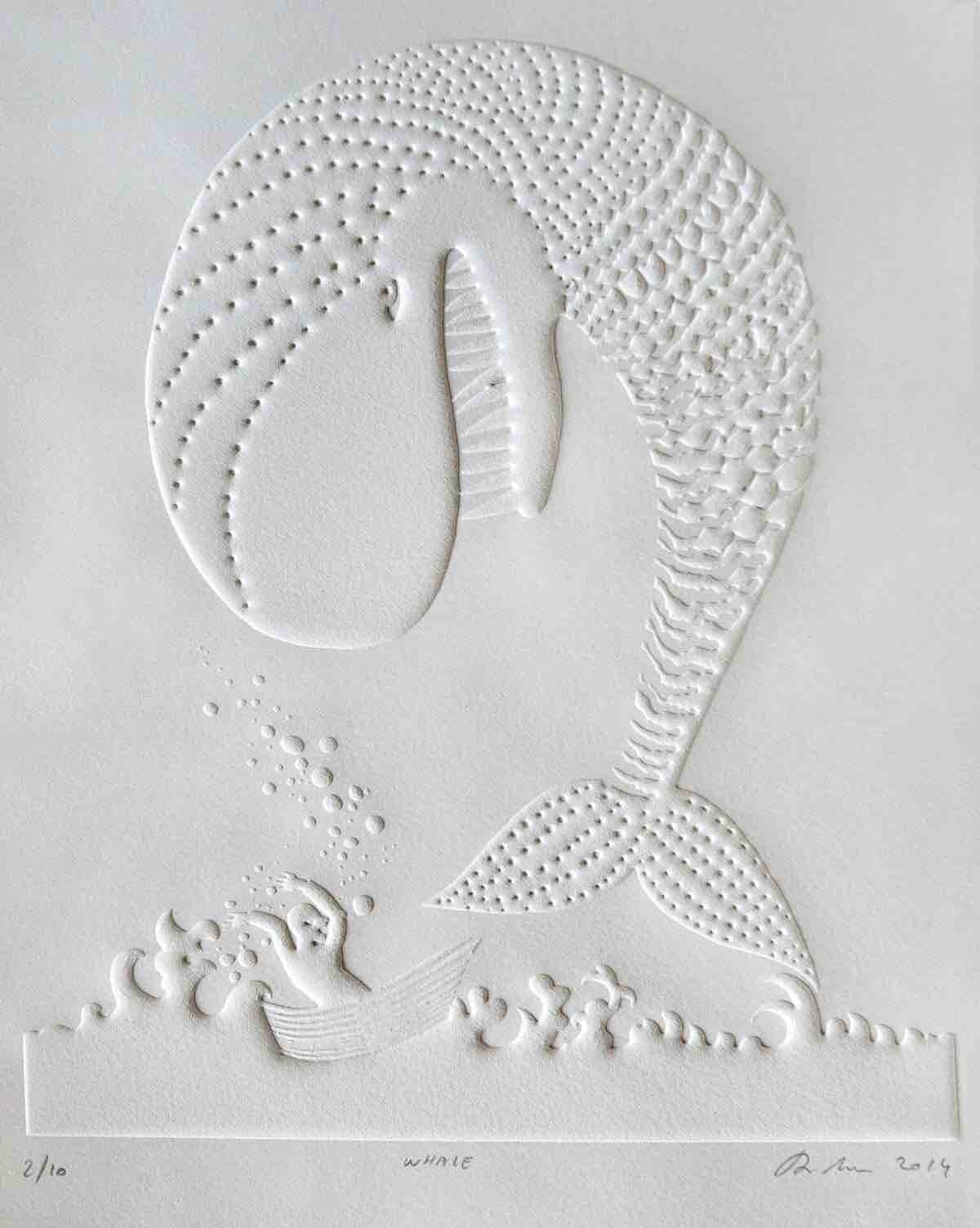In her tenure as director of marketing and communications at the Pilchuck Glass School, Diane Wright became enamored of the little-known print collection in the school's archive of work made through the glass plate printing process known as vitreography. These are works in paper that are printed using a cold-worked sheet of glass as the plate, offering a number of advantages over a metal plate, including that it can be laid over the paper it will eventually be printed on during its creation, and it doesn't break down during repeat uses. Since she was appointed curator of glass at the Chrysler Museum of Art in December 2013, Wright had been looking forward to giving a platform to highlight this less well-known artform. "I wanted to be able to show them here in an environment where we have a strong focus on glass, but we also show a lot of other work," Wright said in a telephone interview with the GLASS Quarterly Hot Sheet. "There's this wonderful marriage between 2-D work that uses glass as a printing matrix and it also illustrates an interesting range of artists who who have worked at Pilchuck."

The pioneer of this glass process, Harvey Littleton, was also the founder of Studio Glass, developing the small-scale furnace technology that made it possible for individual artists to work with molten glass. While Studio Glass became a major force in the field of art from craft materials, vitreography never enjoyed similar impact. That didn't mean important venues did not explore the technology. In 1990, Pilchuck's Elizabeth Tapper purchased the school's first vitreographic printing equipment and the Pilchuck Press has been in constant use ever since. The exhibition "Pilchuck Prints," which features rarely seen glass prints from renowned artists who’ve spent time at the Pilchuck school, will remain on view in Norfolk, Virginia, through September 17, 2017. An exhibition with the same title curated by Pilchuck's artistic director, Tina Aufiero, ran at the Schack Art Center in Fall 2016.

With input from Aufiero to plan this larger exhibition, the team of Wright and Chrysler Museum curator of exhibitions Seth Ferman have assembled prints from over 50 artists, including Terry Adkins, Jane Bruce, Squeak Carnwath, Nick Cave, Dale Chihuly, Judy Chicago, Mona Hatoum, and others. For this exhibition, one of the original glass plates accompanies its paper print to show how the process unfolds, according to Feman. In addition, an array of media created by many of the same Pilchuck artists, such as, Nick Cage, Carrie Atkins, and Will Cole, are identified from Chrysler's permanent collection. “I think it’s exciting as an institution to think about the dialogs between media and the opportunities to integrate different kinds of materials, and this was a perfect way to do that,” Feman said.

"Any one of these prints can stand on its own," Wright said. "But together they make this cohesive whole that tells a story about the school, that tells a story about several decades of artists working in a particular region of the country, and tells a story about experimenting and print making on a glass plate."

IF YOU GO: “Pilchuck Prints” Through September 17, 2017 Chrysler Museum of Art One Memorial Place Norfolk, Virginia 23510 Tel: 757.664.6200 Website






